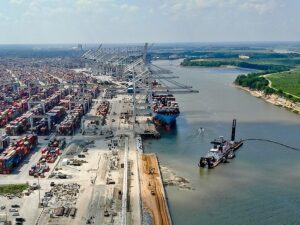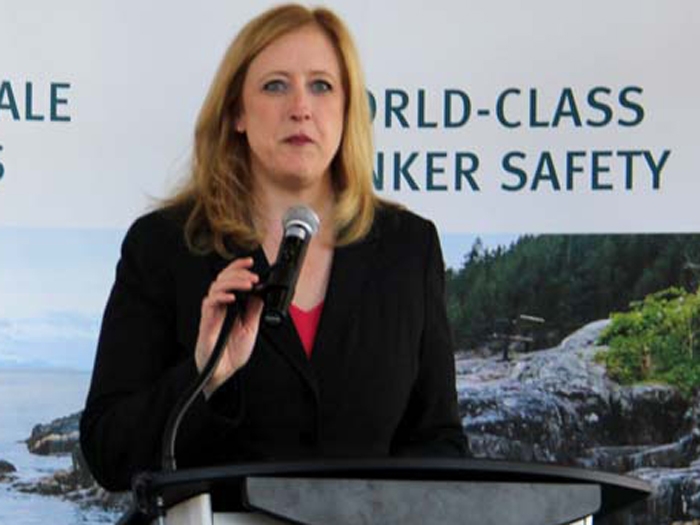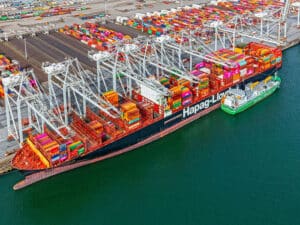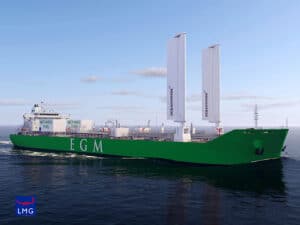
Canada announces new tanker safety measures
Written by Nick Blenkey
Minister of Transport Lisa Raitt
MAY 14, 2014 — The Government of Canada said yesterday that it is further strengthening Canada’s tanker safety system with measures that act on recommendations by an independent Tanker Safety Expert Panel. They also build on other studies, as well as input received from provincial governments, Aboriginal groups and marine stakeholders. They are additional to measures announced in March 2013.
“With these new measures in place, we are enhancing Canada’s world class tanker safety system, one that provides maximum protection to the Canadian public and our environment,” said Minister of Transport Lisa Raitt.
Following is taken from a backgrounder released by the Government of Canada:
Modernizing Canada’s Navigation System
Currently, mariners navigate Canada’s waterways using primarily visual navigational markers, such as buoys, lighthouses, paper nautical charts, and publications, as well as radar. The marine industry strongly supports e-navigation as it will result in better, more reliable navigational information, leading to increased vessel safety and more efficient operations. Under this initiative, the Canadian Coast Guard, the Canadian Hydrographic Service, Environment Canada and Transport Canada will begin the modernization of Canada’s marine navigation system by moving towards a system that will share real-time electronic marine safety information with mariners.
Specific measures include providing updated navigational information in a format that is integrated with vessel systems (such as electronic charts and other safety information); implementing leading-edge tools and technology to support the collection and sharing of this information to mariners (e.g., smart environmental weather buoys, and year-round lighted buoys on the St. Lawrence shipping channel). Another measure is to propose regulatory amendments to extend Automated Identification Systems carriage requirements to a greater number of vessels, which will enhance vessel monitoring by Canadian authorities and by other ships navigating nearby.
Area Response Planning
Reflecting the independent Tanker Safety Expert Panel’s main recommendation in its November 2013 report, A Review of Canada’s Ship-Source Oil Spill Preparedness and Response Regime—Setting the Course for the Future, the Government of Canada will work collaboratively with each of Canada’s four certified response organizations and other key stakeholders to develop and implement tailored response plans in four areas that have the highest level of tanker traffic:
the southern portion of British Columbia;
Saint John and the Bay of Fundy, New Brunswick;
Port Hawkesbury, Nova Scotia; and
Gulf of St. Lawrence, Quebec.
Oil spill preparedness and response activities in these areas will take into consideration geography, environmental sensitivities, traffic volumes, and ensure the appropriate spill cleanup equipment is in place and readily available. This initiative will draw on Aboriginal and marine stakeholder participation to strengthen spill preparedness and response plans. Lessons learned from these four areas will be used to refine area response planning models, and in the future, will allow the Government of Canada to consider options for implementing this spill-response planning approach in other locations across Canada.
Effective response planning requires an understanding of how oil products behave if spilled into a marine environment. Preliminary scientific research conducted by Environment Canada and Fisheries and Oceans Canada concluded that diluted bitumen can behave differently than other oils under certain environmental conditions. Environment Canada, Fisheries and Oceans Canada and Natural Resources Canada will undertake additional research and development into the pre-treatment of heavy oil products at the source; the behaviour of different formulations of heavy oil products when spilled in marine environments; and a variety of potential alternative response measures.
Building Marine Safety Capacity in Aboriginal Communities
This initiative will assist Aboriginal communities to access training and equipment to allow for their participation in marine emergency preparedness. These measures will have inter-related benefits: they will support a strong safety system through Aboriginal participation; and provide skill enhancement opportunities. This activity reflects recommendations by the Special Federal Representative for West Coast Energy Infrastructure, Mr. Douglas Eyford in his December 2013 report, Forging Partnerships, Building Relationships: Aboriginal Canadians and Energy Development.
Alternative Response Measures
This initiative would propose legislative amendments to lift legal prohibitions to using alternate response measures during emergencies, and to clarify the Canadian Coast Guard’s authority to use alternate response measures to reduce the environmental impact of ship-source oil spills. As noted by the Tanker Safety Expert Panel, mechanical recovery (booming and skimming) is the predominant spill response measure used in Canada. The panel also noted that there are a number of federal laws that currently limit the use of alternative response measures such as using spill-treating agents, even though using these tools can provide a net environmental benefit.
Liability and Compensation: Ensuring polluters pay
There are several sources of compensation for oil spills:
Canada’s liability and compensation regime for oil spills is based on the “polluter pay” principle. If a ship causes a spill, under Canadian law its owner is liable for losses and damages. Therefore, shipowners are required to carry insurance to cover their liability.
As well, there are two international funds available, known collectively as the International Oil Pollution Compensation Funds. Combined with the Shipowners liability, these funds provide for approximately $1.2 billion in compensation for a spill of persistent oil carried by a tanker.
Additionally, Canada’s Ship-Source Oil Pollution Fund (SOPF) pays compensation for damages from oil spills in Canada from any type of oil and any type of ship. The SOPF was created in the early 1970’s from levies from receivers and shippers of oil by ship. The SOPF’s current reserve is approximately $400 million, and its total liability for claims for any one spill is approximately $161 million.
Combined, these funds can be used to cover up to $1.36 billion in spill cleanup costs, and related damages.
The Government of Canada will enhance the liability and compensation regime by introducing legislative and regulatory amendments to:
- Allow the full balance of the SOPF, currently about $400 million, to be available in the event of an oil spill;
- In the event that all available sources of funds have been exhausted by spill-related claims, the Government of Canada will ensure compensation is provided to eligible claimants, and then recover those payments from the marine oil transport industry through a levy; and
- Align the SOPF with international funds by covering pure economic losses suffered by people who have had a loss of earnings but whose property has not been contaminated by an oil spill.





Leave a Reply
You must be logged in to post a comment.